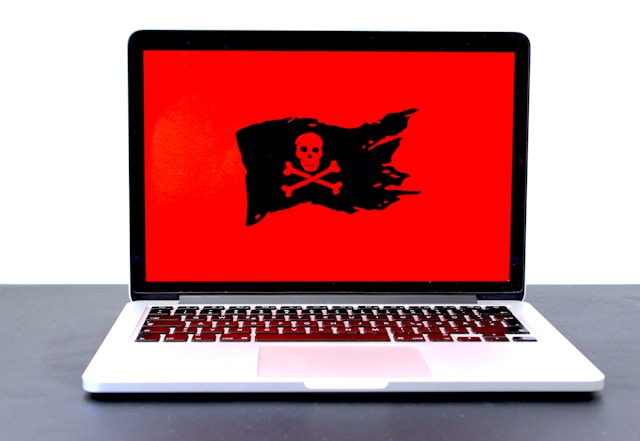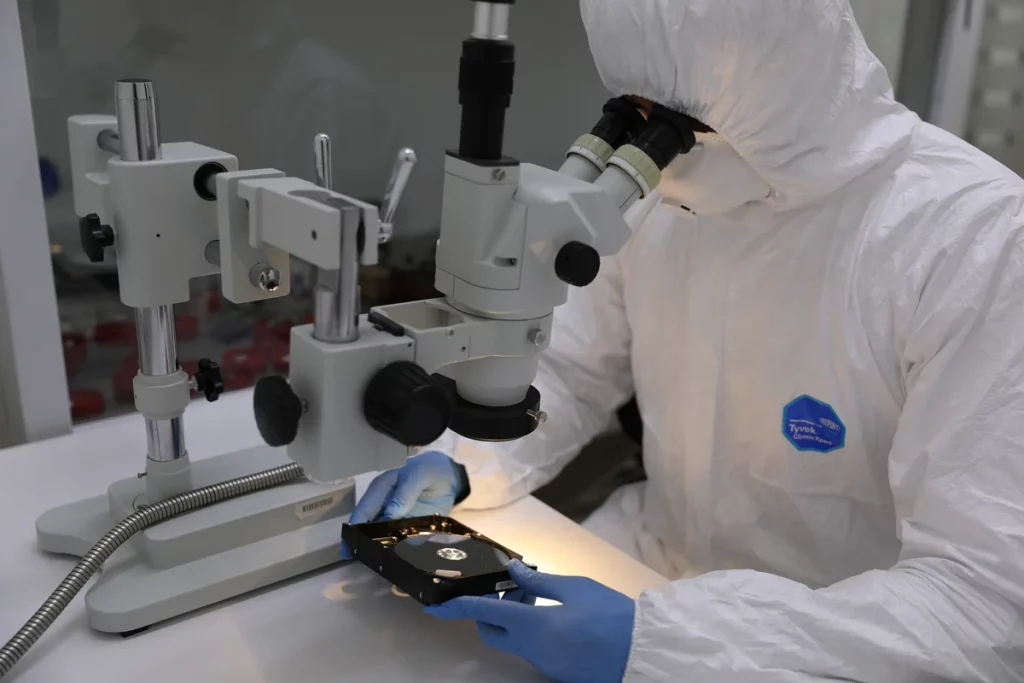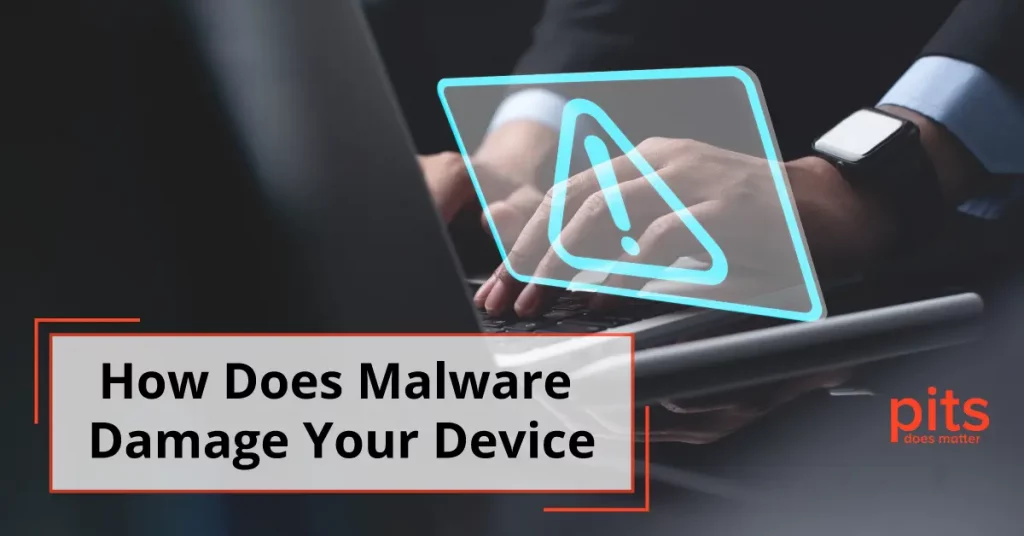Malware, or malicious software, is a type of software that is designed to harm your device or mobile device. It can be installed on your device without your knowledge or consent, and it can cause a variety of problems, including data loss, system damage, financial loss, and privacy invasion.
Malware, an abbreviation for malicious software, encompasses a wide range of software programs specifically designed to compromise your computer or mobile device. Often installed covertly without the user’s knowledge or consent, malware can wreak havoc in various ways, including causing data loss, damaging system components, leading to financial losses, and violating personal privacy.
These nefarious programs come in many forms, such as viruses, worms, trojan viruses, ransomware, and spyware, each with unique infiltration and damage potential methods. As our reliance on technology increases, so does the importance of being vigilant against malware threats to protect our valuable information and maintain the security of our devices.
What Can Malware Do to Your Device?
Steal Sensitive Information
Information theft is one of the most severe consequences of malware. This issue usually occurs when the device is infected by trojan or spyware.
This way, hackers can gather personal or business information, sell it to third-party sources or use it for their own benefit. Usually, they steal passwords, banking information, browsing history, and other confidential data.
File Inaccessibility
Various types of malware can delete or corrupt programs and files on your device. While the malware is still on the media, the user can not access the data.
In a ransomware situation, hackers can demand a ransom in exchange for the files. You can clean the device if you have data backed up somewhere safe. In another case, a data recovery company can help you.
Slow Down the Device
When installing malware on your device, it starts its affection on it. Usually, it begins with the consumption of the media's memory. Another thing malware can do, is create an enormous amount of copies and fill the hard drive with them. This way, there is no space left for other programs. It also results in the slow performance of your device.
Downtime
Regardless of the type of malware infection, it will affect businesses and individuals when appearing. All the plans of the individual will be ruined.
A company will face severe downtime and waste resources, time, and money. It can even spread through the network and cause more damage to the infrastructure.
The repercussions of malware can result in significant issues for both individuals and businesses. For all parties involved, timely detection of malware is crucial. By identifying and addressing these malicious programs promptly, users can prevent their spread and minimize the damage they cause.
Signs of Malware on Computer
Malware often employs sophisticated and elusive mechanisms, allowing it to remain undetected for extended periods. Viruses can effectively hide their origins, leaving virtually no discernible traces. Their objective is to persist within the system for as long as possible, making it difficult for the user to recognize the presence of a threat.
Nevertheless, in some cases, malware can not go unnoticed. One of the common signs of malware is a sudden decrease in performance. Malware fills out your device’s memory, making it much slower. Pop-ups and unusual ads are other symptoms of malware infection. Something is wrong if the system automatically uses new toolbars, icons, websites, or search engines. If you notice any of these symptoms on your device, it was infected by malware.
How To Remove Malware from Computer?
When noticing signs of malware on your storage device, it is essential to find it. You can perform several scans to allocate the issue in your media. There are many malware detection tools that can inspect your computer system, detect and remove malicious codes and programs.
However, if the malware affects your files, there is a possibility of data loss. File corruption is one of the most severe consequences of malware.
When facing data inaccessibility on your device, it is critical not to restore the files yourself. There are various data recovery tools on the Internet, but they can worsen the situation. First, by uploading data recovery software on the media, you can insert another malware and return to where you started.

Secondly, there is always a risk of overwriting. Hence, if you want to recover your corrupted file safely and professionally, it is better to entrust your device to professionals in this field.
How to Prevent Malware Infection
Protecting against malware is vital in the modern digital world to safeguard your personal data, financial resources, and overall online security. Below are several effective approaches to help you avoid malware and its detrimental effects:
Use Reliable Antivirus Software
Start by installing trustworthy antivirus and anti-malware software on your devices. Make sure to keep these programs up to date to safeguard against the most recent threats.
Keep Updated
Keeping your OS and software updated with the most recent security patches is crucial. Enabling automatic updates ensures you always use the most recent and secure versions available.
Be Careful with Emails
Be careful of unrequested emails, especially those with attachments or links. Avoid opening attachments or clicking links unless you are confident they originate from a reliable source. Always verify the sender’s identity.
Beware of Phishing Attempts
Phishing emails and websites attempt to trick you into exposing sensitive data. Be cautious when providing personal information online, and double-check the legitimacy of websites by looking for secure connections (https://) and scrutinizing URLs.
Use Strong Passwords
Generate robust and distinctive passwords for all of your online accounts. You can use a trustworthy password management tool to create and securely store intricate passwords.
Use Two-Factor Authentication (2FA)
Enable 2FA on your online accounts. It is an additional level of protection by necessitating a secondary verification method, like receiving a unique code on your mobile device.
Regularly Back Up Your Data
Always consistently create backup copies of your crucial data on an external storage device or a secure cloud platform. In the unfortunate circumstance of a malware attack, having these backup files can help safeguard against data loss.
Avoid Downloading from Untrusted Sources
Only download software and files from reputable sources. Avoid cracked or pirated software, as it often comes bundled with malware.
Data Recovery after Malware
PITS Global Data Recovery Services provides businesses and individuals facing malware infection with professional data repair solutions. Our engineers have years of experience working with various data storage devices, operating systems, and file types. Regardless of the malware’s consequences, we successfully restore files from your media. We recover lost data from hard drives, RAIDs, servers, SSDs, and other devices.

If you’re facing a data loss situation, don’t hesitate to contact us. Our 24/7 data recovery services are available to you, 365 days a year. Let us help you recover your precious data today.

We start the recovery process with a risk-free evaluation. Our technicians estimate reasons for data loss and the level of damage. Based on it, we select the most suitable recovery strategy.

With years in the data recovery industry, our company supports the highest customer satisfaction rate. We do everything to provide a positive experience for our clients.

During our remote customer file verification session, you will thoroughly review all necessary documents and records to ensure accuracy and compliance.

We offer data recovery services from over 50 locations across the US. This means that no matter where you are located, you can access our services to recover the data.

With our certified data recovery services and 99% success rate, we are confident that we can recover your precious data and get you back up and running in no time.
Our company offers a secure and transparent malware data recovery process, ensuring our clients feel confident when entrusting their devices to us. Our data recovery journey begins with a complimentary, no-risk assessment. During this evaluation, our expert technicians determine the cause of data loss and assess the extent of the damage. Utilizing the insights gained from this evaluation, we tailor the most effective data recovery strategy to suit your specific needs. By focusing on delivering a seamless customer experience and prioritizing data security, our services are designed to give you peace of mind throughout the recovery process.
By the end of the assessment, a client is provided with a service quote that includes price options and turnaround times. We offer our clients flexible service options so they can choose the one that suits their needs, deadlines, and budgets.

The further data recovery process is performed in specialized facilities using the latest tools. We deliver the recovery of lost data in the safest way possible, supporting all the security requirements.
Hence, entrust your case to our specialists if you are facing a file corruption situation after a malware infection. We also handle ransomware encryption cases and achieve the maximum results by encrypting and restoring the data.
Start your case with our experts today by filling out the below form. You can also reach out to our customer service. They will gladly answer your question and assist you in your malware infection and file corruption situation.
Frequently Asked Questions
What is malware?
Malware is short for malicious software. It is a type of software intentionally designed to harm or exploit computer systems, networks, and devices. Malware can include viruses, worms, Trojans, ransomware, spyware, adware, and other malicious programs.
Can malware infect devices without internet connectivity?
While the internet is a common medium for malware distribution, it is possible for malware to infect devices without an internet connection. Malware can spread through infected removable media, malicious software installations, or by exploiting vulnerabilities within the local network.
What are the signs that your device may be infected with malware?
Some common signs of a malware infection include slow performance, frequent crashes or freezes, unexpected pop-up ads, unauthorized changes to system settings, excessive network activity, unexplained data usage, missing or modified files, and antivirus alerts or warnings.
Can malware affect different operating systems?
Yes, malware can affect various operating systems, including Windows, macOS, Linux, Android, and iOS. While Windows has historically been targeted more frequently due to its popularity, other operating systems are not immune to malware attacks. Malware developers adapt their techniques to target vulnerabilities specific to each operating system.
Can antivirus software guarantee protection against all malware?
While reputable antivirus software can provide a strong defense against many types of malware, it cannot guarantee 100% protection. New malware variants are constantly emerging, and some sophisticated malware may go undetected by traditional antivirus programs. It’s important to keep your software up to date and employ additional security measures to minimize the risk of infection.
